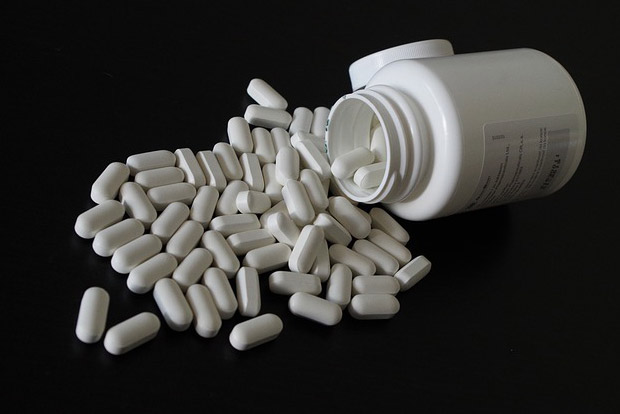Begin typing your search...
Studies explore Omega-3 Index benefits for immunity and cell membrane integrity
Both studies observed benefits associated with higher blood omega-3 levels (EPA+DHA) in healthy people, which helps provide support for establishing Dietary Reference Intakes (DRIs) for EPA and DHA.

New Delhi
The omega-3 content of RBC membranes, i.e., the Omega-3 Index, is a stable biomarker of long-term omega-3 EPA and DHA intake. And it has been known for decades that fatty acids sequestered in RBC membranes contribute to structural integrity and affect signalling pathways.
RBC cell deformability (i.e., ability to change shape) increases with Omega-3 Index, so researchers in this study asked the question: "Is a higher Omega-3 Index associated with differences in RBC structure in healthy people?" "We used the RBC distribution width (RDW), measured routinely in haematology labs, as our biomarker of interest because it is a standard way of assessing RBC size heterogeneity, which is related to proper cell membrane deformability," said Michael McBurney, PhD, FCNS-SCN, FASN, lead author on this paper, and a consulting scientist with the Fatty Acid Research Institute (FARI).
"Although RDW is used clinically to diagnose anaemia, it has recently been shown to also predict risk of death from multiple diseases -- i.e., cardiovascular, SARS-COV-2, sepsis, lung disease and cancer. Instead of sick people, however, we chose to study healthy people. Why?" he said. "Because we wanted to determine if RBC EPA+DHA levels were associated with RBC structure and function in non-disease states." The researchers in this study indeed found a relationship. In 25,485 individuals with no evidence of inflammation or anaemia, a higher Omega-3 Index was still significantly associated with a lower (i.e., better) RDW. And while their observation does not prove that omega-3 fatty acids lower the RDW, it does strengthen the argument to establish DRIs for EPA+DHA in a healthy population.
The second study dove deep into the relationship between the Omega-3 Index and the immune system. The human immune system consists of innate and adaptive components. The innate component is made up of cells that phagocytize injured and diseased human cells and bacteria that have invaded the body. This digestive action by innate immune cells such as neutrophils (N) and natural killer cells destroys enzymes and acids from being released by dead or dying cells that can damage adjacent healthy cells. The adaptive system, on the other hand, consists of memory cells, i.e. lymphocytes (L) or T and B cells, with the learned ability to attack cells expressing certain markers, e.g. those infected with viruses. Cells forming tissues and organs, as well as the immune cells, can release signalling molecules, e.g., cytokines, prostaglandins, leukotrienes, specialized pro-resolving lipid mediators (SPMs) to direct immune cells to diseased/infected areas of the body (and to stimulate the creation of new immune cells).
The neutrophil: lymphocyte ratio (NLR) measures the balance between the innate and adaptive immune system. NLR is also a biomarker of systemic inflammation, and like RDW, predicts higher risk of death from numerous chronic diseases. A normal NLR is roughly 1-3, with a score above 6 indicating mild stress and above 9 signalling critical illness. "As stated previously, DRIs are reserved for the general, healthy population. Because one of our long-term goals at FARI is to generate scientific support for EPA+EPA DRIs, we also restricted this study to healthy people. In other words, by excluding people with active inflammation [C-reactive protein (CRP) > 3mg/L - the threshold for acute inflammation] we tried to minimize the chance for critics to claim our findings were disease-related," McBurney explained.
In this study with 28,871 healthy, non-inflamed individuals, the researchers observed inverse associations between the Omega-3 index and NLR, i.e., the higher the Omega-3 Index the lower the NLR. This was especially evident among individuals with an Omega-3 Index below 6.6 per cent (an ideal Omega-3 index is considered to be 8 per cent or higher). In these people, the NLR clearly rose as the Omega-3 Index fell; but above an Index of 6.6 per cent, the NLR remained relatively stable. McBurney pointed out that the observed relationship in healthy people suggests that blood EPA+DHA levels play a role in maintaining a quiescent, balanced immune system, and therefore provides evidence of a nutrient - structure/function relationship in healthy people. However, even when people with evidence of chronic inflammation (i.e., CRP > 3mg/L) were included, the relationship still held.
"The NLR paper may be particularly important because most nutrition-immune studies measure circulating levels of inflammatory molecules, i.e., markers of inflammation, making them disease-related findings," McBurney said, adding, "This is a report of an association between nutrient status and immune function/balance based on cells in healthy people." "These two reports linking a high Omega-3 Index with low (i.e., healthier) levels of two novel biomarkers -- RDW and NLR -- help us understand a little better why omega-3 fatty acids are good for us," said William S. Harris, PhD, FASN, senior author on both studies and President of FARI.
Visit news.dtnext.in to explore our interactive epaper!
Download the DT Next app for more exciting features!
Click here for iOS
Click here for Android
Next Story



